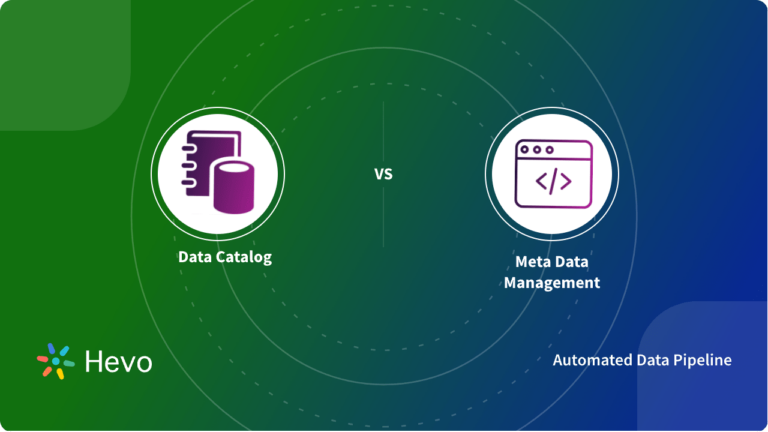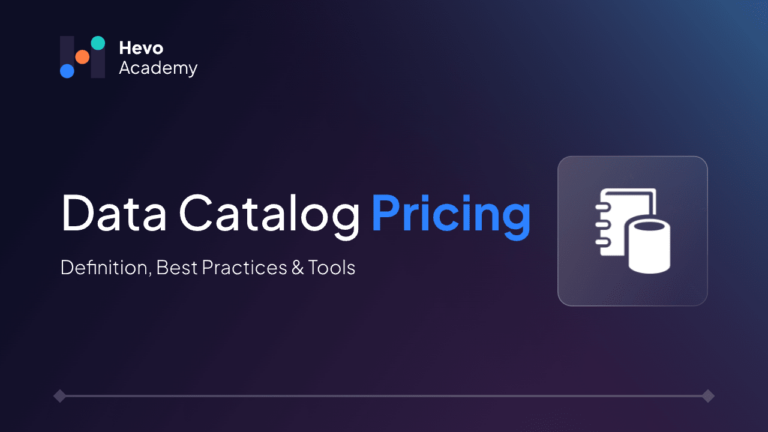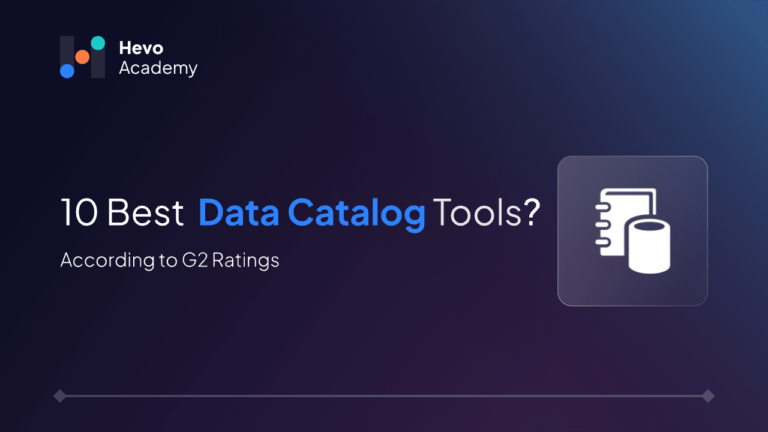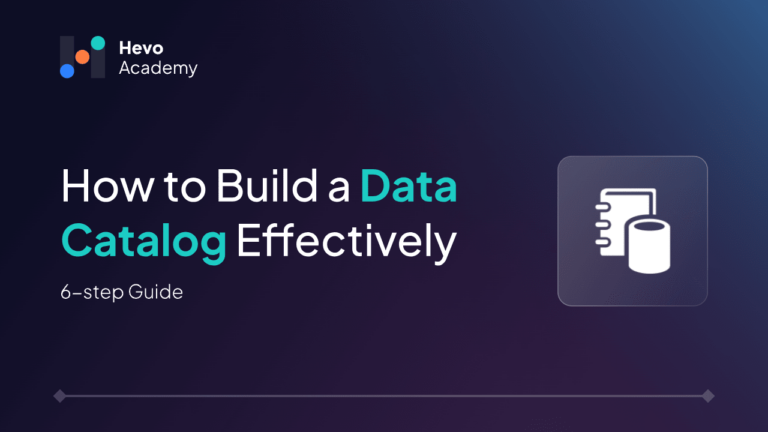As your organization expands, you are quickly inundated with information from various divisions. Dealing with this data manually takes up a lot of time and can lead to mistakes. You need a way to enhance data retrieval and guarantee consistency. The current dilemma is deciding between a data catalog and managing metadata.
Table of Contents
When deciding between these two options, it is important to evaluate your specific requirements. A data catalog is ideal for efficiently organizing and accessing vast amounts of data, streamlining the task of identifying, understanding, and managing data by maintaining a comprehensive inventory of data assets. On the other hand, metadata management tools are necessary for tracing data lineage, managing data definitions, and guaranteeing consistency among data assets. That is vital for data governance, compliance, and quality.
In our article Data Catalog vs Metadata Management, we explore how to decide between the two based on your unique set of use cases. Understanding these distinctions is essential for implementing the right tools and strategies. Why? Because improving data accessibility, governance, and quality ultimately boosts your business’s data management and compliance.
What is a Data Catalog?
A data catalog is like a detailed map for all the data in an organization, it helps you locate and understand different data sets by providing details about each data asset, such as where it is, who owns it, and how it can be used. For instance, Google Cloud Data Catalog is a tool that helps users quickly discover and manage their data on Google Cloud Platform.
As organizations grow, so does their data. With a data catalog in place:
- Your team can save time and resources by quickly finding and accessing the data they need, which increases efficiency.
- You can obtain a competitive advantage by accessing data more quickly and correctly, which improves decision-making.
- Teams can also interact more effectively since a data catalog facilitates the exchange and manipulation of data across departments.
All of this is necessary to keep your business effective, streamlined, and competitive.
Know more about how you can build the data catalog effectively.
Looking for the best ETL tools to connect your data sources? Rest assured, Hevo’s no-code platform helps streamline your ETL process. Try Hevo and equip your team to:
- Integrate data from 150+ sources(60+ free sources).
- Utilize drag-and-drop and custom Python script features to transform your data.
- Risk management and security framework for cloud-based systems with SOC2 Compliance.
Try Hevo and discover why 2000+ customers have chosen Hevo over tools like AWS DMS to upgrade to a modern data stack.
Get Started with Hevo for FreeWhat is Metadata Management?
Metadata management is all about handling information that describes other data. Think of it as organizing and managing labels or tags that tell you what your data is about, where it comes from, and how it can be used. Whether it’s collecting, storing, or using metadata, these processes make it easy to find and understand your data.
Metadata management tools help you quickly locate the data you need, understand how different pieces of data are related, and ensure the data is accurate and useful. Tools like Informatica and Collibra are popular for helping users manage their metadata effectively.
When an organization struggles with dispersed and difficult-to-find data, it results in wasted time seeking for information, inconsistent data utilization across departments, and poor decision-making owing to untrustworthy data context.
With metadata management in place:
- Your team gets accurate and relevant data, ensuring better decision-making.
- You attain quick and informed decisions with full data context from metadata.
- Your teams collaborate better by easily sharing and understanding data across departments.
All of this is crucial for keeping your business efficient, streamlined, and competitive.
Criteria Comparison: Data Catalog vs Metadata Management
| Criteria | Data Catalog | Metadata Management |
| Purpose | Organizes and discovers data assets | Ensures data quality, governance, and compliance |
| Scope | Data inventory for all data sources | Collection, storage, and use of metadata |
| Key Function | Data discovery and profiling | Metadata governance and policies |
| User Base | Data engineers, analysts | Data stewards, governance teams |
| Implementation | Tool-based | Strategy-based |
| Data Lineage | Tracks data origins and transformations | Ensures metadata accuracy and consistency |
| Data Accessibility | Enhances data searchability | Maintains metadata standards |
| Compliance | Supports regulatory requirements | Enforces data governance policies |
| Integration | Integrates with various data sources | Integrates with data governance frameworks |
| Automation | Automates data cataloging processes | Automates metadata management tasks |
| Data Quality | Improves data usability | Ensures metadata quality |
| Collaboration | Facilitates data sharing and collaboration | Standardizes metadata across teams |
| Security | Implements access controls | Manages metadata security |
| Scalability | Scales with data growth | Scales with metadata complexity |
| Cost | Tool licensing and maintenance | Implementation and management costs |
Detailed Comparison: Data Catalog vs Metadata Management
Understanding the distinctions between data catalog vs metadata management highlights their unique roles. For example, a data catalog is useful for quickly identifying and exploiting data assets, whereas metadata management is critical for data quality and compliance. Thus, while both are necessary, their responsibilities and implementations differ greatly. While enterprise data catalogs encompass elements of metadata management, their primary role is to enable data discovery and user access to diverse data assets.
When comparing data catalog and metadata management, consider the following top five factors:
1. Purpose
Understanding the key purpose aligns the tool with your organization’s requirements. This could be the primary goal, such as increasing data accessibility or guaranteeing data governance and compliance. When your purpose is clear, you can be confident that you are closer to reaching your data management objectives.
But how do you figure it out? Go for a data catalog if your focus is on organizing and discovering data assets, rather than metadata management for ensuring data quality, governance, and compliance.
For instance, a data catalog provides a searchable inventory, making it ideal for making data assets easily discoverable for analysts. On the other hand, if your priority is to maintain data governance and compliance, metadata management is critical for enforcing policies and standards.
Quick Tip: Identify your key data management needs and strategic goals, then map them to the tool’s functionalities.
2. Scope
Determining the tool’s breadth involves understanding the variety of data sources and the kinds it supports. This knowledge affects the extent of your data management, which in turn affects the overall efficacy of your data strategy.
However, how do you solve it? Go for a data catalog when assessing whether you need an inventory of all data sources, vs metadata management when you want to focus on metadata collection, storage, and use.
For instance, a data catalog improves data discoverability, making it useful for organizations needing a broad inventory of data assets across various sources. On the other hand, if your priority is consistency and accuracy, metadata management focuses on detailed metadata for specific data governance needs.
Quick Tip: Match the tool’s scope with your data management requirements by listing all necessary data sources and types to ensure comprehensive coverage.
Want to dive deeper into data governance vs data catalog? Check out our blog to see their key differences and how they work together in a modern data strategy.
3. Key Function
Meeting your specific requirements is the primary function. It represents the tool’s major feature or capacity. Whether it’s data discovery and profiling or governance and policy enforcement, defining the key functions ensures that your data management requirements are satisfied efficiently.
But how do you figure it out? Go for a data catalog if you need data discovery and profiling, vs metadata management if you require governance and policy enforcement.
For example, a data catalog ensures data accessibility making it ideal for organizations needing robust data discovery and profiling capabilities. In contrast, if preserving data integrity is your top goal, metadata management works best suited for organizations that require strong governance and policy enforcement.
Quick Tip: To concentrate on the primary function that most closely aligns with your data management goals, make a list of your essential use cases and link them to the tool’s primary functionalities.
4. Data Lineage
Maintaining and sustaining data accuracy and consistency is critical as it makes sure the credibility of your data. For developing a thorough understanding of data flow and dependencies, you need to track data origins and transformations.
But how do you figure it out? Go for a data catalog if you need to track data lineage for better data understanding, vs metadata management if you need to ensure metadata accuracy and consistency.
For instance, a data catalog is suitable for organizations needing to trace data origins and transformations for better data understanding. On the other hand, metadata management is important for ensuring metadata accuracy and consistency across the organization.
Quick Tip: Maintain data integrity and trust by picking the tool that best supports your data lineage requirements by evaluating which tool provides comprehensive tracking of data origins and transformations.
5. Data Quality
High data quality is required for accurate data-driven decisions. This entails preserving and enhancing data quality, which represents how an organization values and handles its information. High data quality is critical for making dependable data-driven judgments that are accurate and trustworthy.
But how do you figure this out? Choose a data catalog if you want to improve your data catalog, and metadata management if you want to ensure the quality of your metadata.
A data catalog, for example, improves data usability by giving context and making data more easily accessible. In contrast, metadata management maintains metadata quality, which supports total data quality.
Quick Tip: Implement regular data quality tests and standards to prioritize data quality, ensuring dependable and accurate data.
Does the Data Catalog Include Metadata?
Yes, a Data Catalog includes metadata. It organizes and provides context for data assets, making it easier to find, understand, and use data effectively. But how can you tell if your data catalog includes metadata? Here are some signs:
- Each data asset has detailed descriptions and tags that provide context.
- Information about the origins and transformations of data is available.
- Data quality metrics and usage statistics are included.
Now, if a data catalog doesn’t include metadata; data assets lack context, making them harder to understand and use. Additionally, it becomes difficult to track the origins and transformations of data, leading to challenges in ensuring data quality and compliance.
Therefore, having a data catalog with metadata improves several aspects:
- Discoverability: Makes it easier to find and use data assets.
- Governance: Ensures data quality, compliance, and proper data management.
- Decision Making: Provides accurate and comprehensive data insights for informed decisions.
Conclusion
When deciding between a data catalog and metadata management, it’s important to consider your organization’s specific requirements, which may differ from case studies you might be reviewing. For instance, a data catalog fits when you need to organize and access large volumes of data efficiently. Why? It makes it easier to discover, understand, and manage data via its comprehensive inventory of data assets. Conversely, metadata management tools help in tracking data lineage, managing data definitions, and ensuring consistency across data assets. They fit scenarios where you need to ensure data governance, compliance, and data quality.
When you juggle between data catalog vs. metadata management tools, you must consider paying great attention to the following factors:
- Align the tool with your strategic goals.
- Match the tool’s coverage with your data needs.
- Ensure the tool’s main features meet your requirements.
- Choose the tool that best supports data tracking.
- Prioritize tools that enhance data quality.
When working with legacy data infrastructure, determining what works best—data catalog vs. metadata management—can be overwhelming due to the complexities and intricacies of your organization’s data. That’s where the Hevo Data professionals come in. We strategize, plan, and manage the complete data integration process to ensure smooth and effective data management. With our assistance, you can focus on gaining insights and making educated decisions rather than being mired down by data integration complications.
Connect with us today to improve your data integration experience and achieve more with your data.
FAQs
1. What’s the difference between metadata management tools and data catalogs?
Metadata management technologies enable you to manage all aspects of your data, such as its origin and usage. A data catalog is one of these technologies that can help you organize and find this information more readily.
2. What’s the distinction between cataloging and metadata?
Metadata is essentially a label that contains information about your data, such as its size, format, and creation date. Cataloging is the process of organizing your data with these labels so that it can be found and used easily.
3. Is a data catalog considered metadata?
A data catalog is a component of metadata management. It organizes and manages all of the labels (metadata) that define your data, making it easier to discover and comprehend.
4. What is the distinction between data catalogs and data repositories?
A data catalog, like a library catalog, organizes information about books to make it easier to find them. A data repository, like a library, stores actual books (data).




